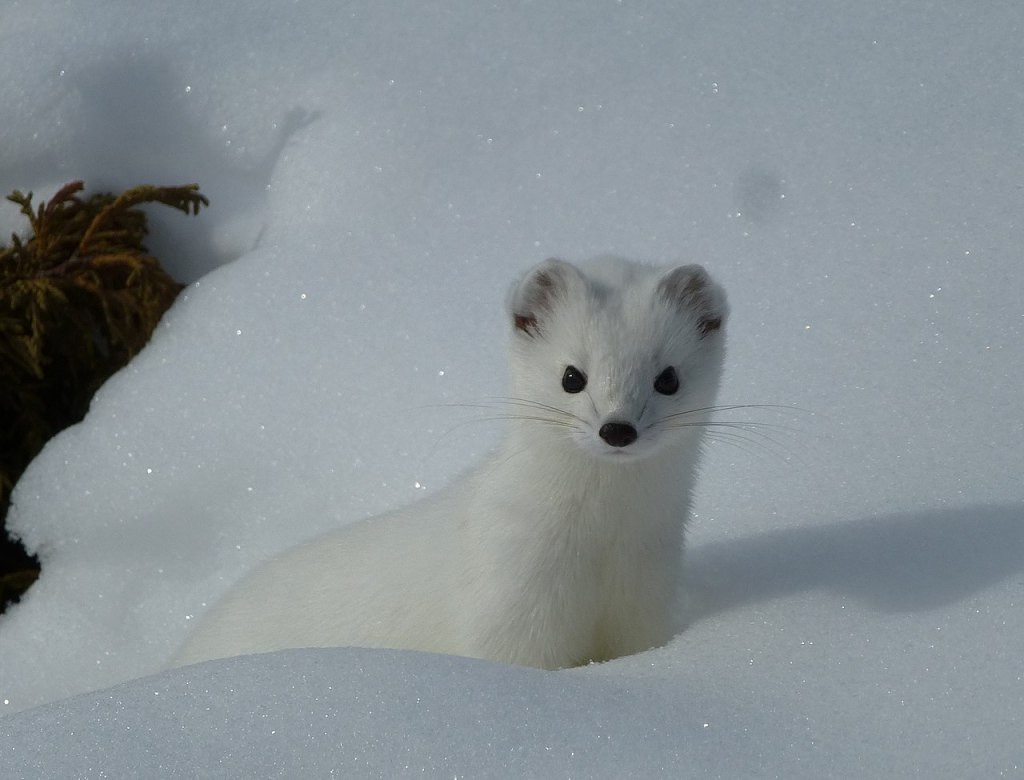Stoats are pretty resourceful animals. They are listed as one of the world’s top 100 worst invasive species, which most people would consider a bad thing. And yes, it is bad for all the species that stoats kill and threaten, but it’s not bad for the stoats themselves. When a species is a successful invader of another ecosystem, I think a few seconds should be given to admire the adaptability of the species before condemning it and trying to work out how to eradicate it.

Image by Steve Hillebrand, USFWS, Public domain, via Wikimedia Commons
Stoats are native to the Northern Hemisphere, in Europe, Asia and North America. They were introduced to New Zealand in the 1880s, to control the rabbit population there. Which was a terrible decision because wild stoats don’t listen when you tell them to only eat rabbits. Instead, they hunt everything, including native birds, which are now under serious pressure from stoats and other introduced species.
Stoats in their native range (and probably in New Zealand as well) prefer areas with both open and covered spaces, such as marshes, and areas adjacent to forests or shrubs. They are good climbers and swimmers, but spend most of their time on the ground. They require something to make dens out of — either hollow logs, stone crevices, or burrows from other animals.
Male stoats are larger than females, weighing up to 116 grams, while females only reach 80 grams. Length ranges from 17 cm to 33 cm. Like most weasels, stoats have an elongated body with short legs and a long neck. Weasels are basically the dachshunds of the mustelid world (but much cuter). Stoats are brown in the summer with a white belly, while in the winter their fur is a beautiful white colour. When in their white phase, stoats are often called ermines, so don’t be confused: they’re the same animal. In both colour phases, stoats have a black-tipped tail which can be used to distinguish it from other species.

Image by Kalabaha1969, CC0, via Wikimedia Commons
Reproduction in stoats occurs in the early summer, from April to July. During this time, the male’s testes enlarge, and he is only fertile during this period. Both females and males mate with many partners, and it is not uncommon for a stoat’s litter to have multiple fathers. Females give birth after about 280 days. During this period, fetal development is suspended for 8 to 9 months, which resumes in the spring, triggered by the arrival of longer days.
Litter sizes are between 3 to 18 young, with 4 to 9 being the average range. By their eighth week they young start hunting with their mother, and continue to develop quickly. Females can reproduce at two months of age, which is often before they are weaned. Male stoats have to wait a bit longer to reproduce, only being able to breed during their second summer. This fast development is essential for stoats, as the live span of stoats in the wild is not very long, usually only one to two years.
Stoats are quite adept predators. They hunt both above ground and in burrows, and their long, skinny body makes them good at both. They usually travel in a leaping zigzag pattern, and will pause every so often to stand on their hind legs to survey their surroundings. They generally hunt small mammals, including rabbits, lemmings, and rodents. When they find their prey, stoats get as close as possible before quickly grabbing the back of the prey’s head with their teeth. Stoats then wrap their bodies around their victims, and bite them repeatedly at the base of the skull, which eventually kills them. Due to their high metabolism, stoats require daily meals, and will often cache prey in their burrows to give themselves a safety net.
Ermine fur is quite popular in some areas, and stoats are often trapped for this reason. Still, this hasn’t had much of an effect on the global population, as these clever little animals are still abundant. Which I’m quite okay with, as long as they stay abundant in their native range and stop killing things in New Zealand.
Cover image by Keven Law from Los Angeles, USA, CC BY-SA 2.0, via Wikimedia Commons, cropped to fit
